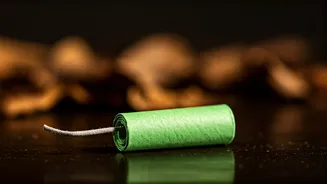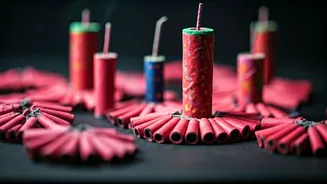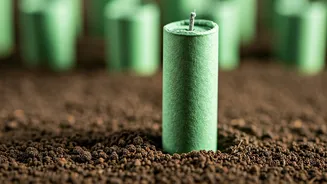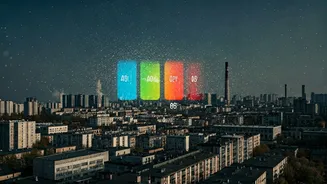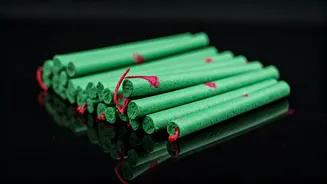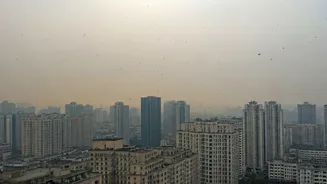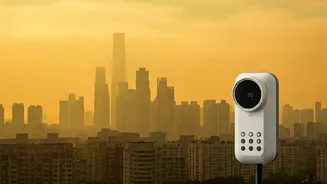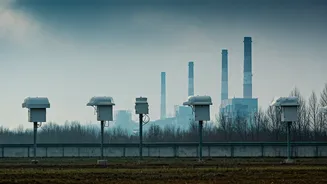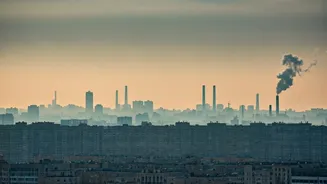What Makes Them Green?
The term 'green crackers' refers to fireworks that have been formulated to reduce the emission of harmful pollutants. Conventional firecrackers release
significant amounts of particulate matter, sulfur dioxide, and other noxious gases that contribute to air pollution. Green crackers, on the other hand, are designed to minimize these emissions. They achieve this by using specific chemical formulations. For instance, they might replace the use of barium nitrate, a common component in traditional crackers, with other chemicals that do not emit harmful substances when ignited. This shift aims to reduce the overall environmental impact of fireworks and address concerns around air quality, especially in densely populated areas and during festive seasons.
Cleaner, Not Clean
It is crucial to understand that 'green crackers' are not pollution-free. While they significantly reduce emissions compared to traditional fireworks, they still release pollutants into the air. The primary aim is to mitigate the harmful effects by decreasing the intensity of the emissions. This means that while the levels of pollutants such as particulate matter might be lower, they are still present. This distinction highlights that the term 'green' is relative, indicating a move towards a less polluting option rather than a completely harmless one. Environmental experts emphasize that the long-term goal should be to find alternatives which eliminate these emissions entirely, but until such solutions become readily available, green crackers serve as a step towards pollution control.
The Science Explained
The scientific principles behind green crackers involve modifying the chemical composition and manufacturing processes to reduce pollutants. These crackers frequently utilize different raw materials and formulations that are designed to combust more completely. This complete combustion minimizes the formation of particulate matter and other harmful byproducts. Researchers and scientists often experiment with various chemical compounds to find safer alternatives to the chemicals in traditional fireworks. This includes substituting materials known for causing significant pollution with less harmful equivalents. Detailed studies and tests are conducted to evaluate the emission profiles of these modified crackers, measuring the levels of different pollutants released during their explosions and assessing how they contribute to overall air quality.
Global Air Quality Context
The shift toward green crackers is happening within the larger context of a global effort to improve air quality. Several countries and regions are implementing stricter regulations on emissions from various sources. This includes a push for cleaner vehicles, industrial practices, and emission-control technologies. The promotion of green crackers aligns with these broader goals, seeking to minimize the negative health impacts associated with air pollution. The effectiveness of green crackers, along with the other pollution reduction strategies is monitored continuously. Governments and environmental agencies assess the progress being made in reducing emissions and improving overall air quality. This also involves setting specific targets to evaluate the effectiveness of policies, and making necessary adjustments.


